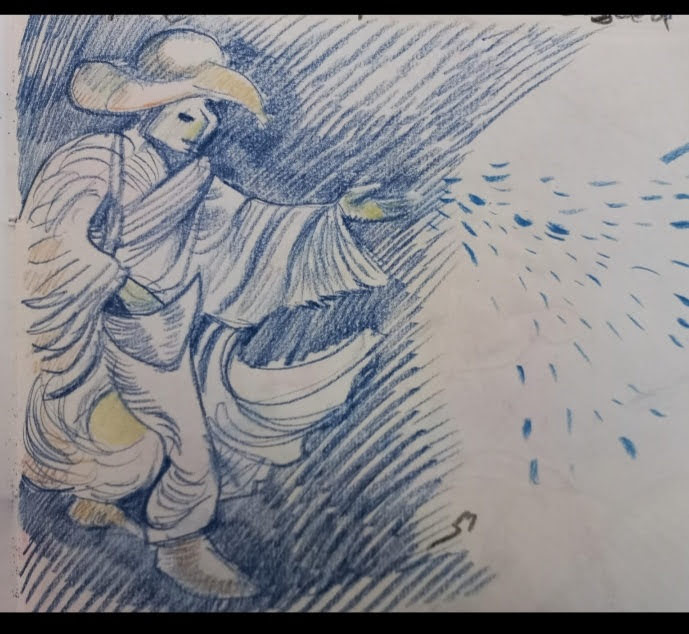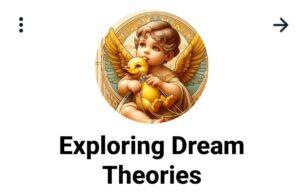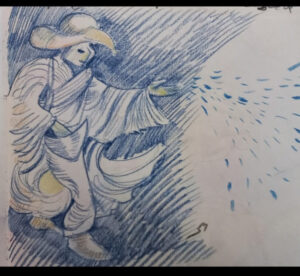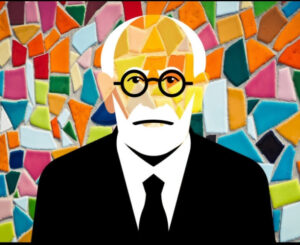Dreaming and the Spectrum of Consciousness
I. Introduction
The website DreamTheory.org, edited by Dr. Raz Even, serves as a comprehensive digital repository exploring the multifaceted nature of dreams, encompassing perspectives from psychoanalysis, neuroscience, cultural studies, and philosophy.1 This report undertakes an analysis focused specifically on the perspective of Dr. Raz Even regarding dreaming and states of consciousness, drawing exclusively upon the content presented on the DreamTheory.org website as reflected in the available research materials. The platform covers an extensive range of topics, including lucid dreaming, neuropsychoanalysis, parasomnias, the role of dreams in creativity and therapy, and historical viewpoints.1 Dr. Even’s role extends beyond authorship of specific articles to curating and highlighting key themes and insights within the field 1, suggesting that the website’s overall structure and content emphasis implicitly reflect his viewpoint on significant areas of inquiry.
Based on the information available through the website’s content, Dr. Even’s perspective appears to emphasize the dynamic and varied nature of consciousness across different sleep and transitional states. A central theme emerging from the site is the advocacy for an integrative approach, particularly one that seeks to bridge classical psychoanalytic thought, notably Freudian theory, with contemporary findings in neuroscience to achieve a more complete understanding of dreaming.1 The selection of diverse theoretical viewpoints alongside a pronounced focus on neuropsychoanalysis and boundary states of consciousness, such as lucid dreaming and sleep paralysis, points towards a perspective that values both a broad exploration of dream phenomena and a specific direction for synthesis.1 This curatorial stance itself suggests an underlying view that progress in dream science involves integrating historical psychological depth with modern empirical methods, especially concerning the neural underpinnings of subjective experience during sleep.
This report will systematically analyze the key components of this perspective as presented on DreamTheory.org. It will begin by examining the proposed integration of Freudian theory and modern neuroscience, forming the neuropsychoanalytic lens apparently favored on the site. Subsequently, it will explore the characterization of dream consciousness itself, focusing on its subjective qualities and relation to waking reality. The analysis will then delve into the spectrum of conscious states associated with sleep, paying particular attention to lucid dreaming and sleep paralysis as distinct modes of awareness. Finally, the report will consider the interplay between these states and their implications for creativity, therapy, and the fundamental understanding of consciousness, before offering a concluding synthesis.
II. The Neuropsychoanalytic Lens: Bridging Freud and the Brain
A prominent feature of the perspective presented on DreamTheory.org is the concerted effort to integrate Freudian psychoanalytic concepts of dreaming with discoveries emerging from modern neuroscience.1 This neuropsychoanalytic approach appears central to the framework highlighted by Dr. Even, representing an attempt to ground historical psychological insights within contemporary empirical findings about brain function during sleep.
The website acknowledges the foundational Freudian view that dreams serve as a window into the unconscious, revealing latent content such as repressed desires and unresolved conflicts.2 This concept, central to psychoanalytic dream interpretation, is presented not merely as a historical artifact but as a theory that finds potential resonance with current neuroscientific understanding.4
Specifically, the site draws parallels between Freudian ideas and studies on the Default Mode Network (DMN).2 It is noted that the DMN, a network of brain regions typically active during wakeful rest and mind-wandering, remains active during REM sleep – the sleep stage most strongly associated with vivid dreaming.4 The activity of the DMN during REM sleep is suggested to indicate shared mechanisms between dreaming and mind-wandering.4 Crucially, this observed neural activity is explicitly linked on the website to Freud’s conceptualization of dreams as manifestations of our deepest unconscious processes.4 This connection attempts to provide a neurobiological correlate for the kind of internal, self-referential, and often emotionally charged mentation that Freud attributed to dreaming.
Beyond establishing correlations, the perspective presented on DreamTheory.org seems to aim for a deeper integration by exploring neurobiological mechanisms that might explain psychoanalytic concepts related to dreaming.1 This suggests a move towards understanding the neural substrates that could give rise to phenomena described in psychoanalytic theory. Examples of this approach mentioned on the site include the study of dreaming in patients with specific brain lesions, such as bilateral damage to the amygdala, or the examination of syndromes involving the cessation of dreaming, referencing Mark Solms’ work.3 Such investigations seek to understand how alterations in brain structure and function impact dream content and processes, potentially illuminating the neural basis for emotional processing or the very generation of dreams, both topics pertinent to psychoanalytic models.
Furthermore, the website addresses the fundamental question of why dreams often possess such a compelling sense of reality and vividness.2 It references the work of Dr. George Northoff, discussed within a neuropsychoanalytic context, which suggests that the brain has an inherent predisposition to create a sense of space and time, contributing significantly to the realistic phenomenology of dream experiences.2
The consistent juxtaposition of Freudian concepts with neuroscientific findings, particularly regarding the DMN, signifies more than just an interdisciplinary comparison. Psychoanalytic theories, especially those of Freud, have historically faced challenges regarding empirical validation. The focus on identifying “parallels” 4 and “neurobiological mechanisms that explain” 1 psychoanalytic ideas can be interpreted as an effort to provide a more concrete, empirically grounded basis for these psychological constructs. Linking the activity of specific neural networks like the DMN to the manifestation of “deepest unconscious processes” 4 represents an attempt to modernize psychoanalytic dream theory, potentially validating its core tenets while also refining them by suggesting specific neural underpinnings. This synthesis aims to enhance the understanding of dreams from both psychological and neural perspectives, highlighting the potential of integrating these fields for both theoretical advancement and practical application.4
III. Dreaming as a State of Consciousness: Subjectivity and Reality
Beyond the specific neuropsychoanalytic framework, DreamTheory.org extensively explores the fundamental nature of dreaming as a distinct state of consciousness.1 A recurring theme is the profound subjective reality that often characterizes dream experiences, prompting investigations into why dreams can appear so intensely real and vivid.2
The site highlights explanations, such as those attributed to Northoff, suggesting that the brain’s intrinsic capacity to generate spatio-temporal frameworks is a key factor contributing to the realistic feel of dreams.2 This perspective implies that the subjective sense of “being there” in a dream world is not merely a passive reflection but an active construction by the dreaming brain. The exploration of consciousness in dreams is also linked to the activity of brain networks like the DMN, connecting the phenomenology of dreaming to underlying neural processes associated with mind-wandering and self-referential thought.1
While direct comparisons are not extensively detailed in the provided materials, the persistent focus on the vividness and reality of dreams implicitly contrasts dream consciousness with typical waking consciousness. This raises fundamental questions about the nature of subjective experience and the reliability of our perception across different states of being. If the brain can generate compelling, subjectively real experiences largely independent of external sensory input during sleep, it challenges assumptions about the direct correspondence between waking perception and external reality.
The emphasis on the subjective realness of dreams appears to function as more than just a descriptive observation on the website; it serves as a foundational philosophical and neuroscientific point of departure. It suggests that the feeling of reality itself is, to a significant extent, a construct of the brain, potentially generated through similar underlying mechanisms in both waking and dreaming states, albeit modulated differently and operating with different inputs. Understanding how the brain achieves this feat during dreaming is therefore presented as crucial for a broader understanding of consciousness itself, particularly how subjective reality is constructed and maintained. This focus naturally leads to an interest in states where the nature of this constructed reality becomes an object of awareness itself, such as in lucid dreaming.6
IV. The Spectrum of Consciousness During Sleep: Lucidity, Paralysis, and Boundaries
DreamTheory.org presents consciousness during sleep not as a uniform state, but as a spectrum encompassing distinct variations in awareness, control, and perception. The site dedicates significant attention to specific states that illuminate this variability, particularly lucid dreaming and sleep paralysis, treating them as valuable windows into the complexities of the mind-brain relationship during sleep.
A. Lucid Dreaming: Consciousness Awakened Within the Dream
Lucid dreaming, defined as the state of being aware that one is dreaming while the dream is ongoing, is prominently featured and explored from multiple angles on the website.3 It is presented not merely as a curiosity but as a unique state of consciousness that offers a powerful lens through which to examine human cognition, self-awareness, and the nature of reality itself.6 The capacity for lucidity challenges traditional views that often portray dreaming as an entirely passive experience, instead suggesting an active role for the dreamer in navigating and potentially influencing their dream content.6
Neurologically, the site highlights research indicating that lucid dreaming is associated with increased activity in brain regions typically less active during non-lucid REM sleep, particularly the prefrontal cortex.6 This area is linked to higher-order cognitive functions such as self-awareness, critical thinking, and executive control. The heightened prefrontal activity during lucidity suggests a hybrid state that blends elements of waking consciousness with the ongoing dream state, offering a unique opportunity to study the neural correlates of self-awareness.6 Furthermore, potential neurological benefits are mentioned, such as facilitating memory consolidation and emotional processing by leveraging the brain’s plasticity during this state.6
From a psychological perspective, lucid dreaming is discussed in relation to psychoanalytic theories, particularly those of Freud and Jung, who viewed dreams as pathways to the unconscious.6 Lucidity adds an intriguing dimension by allowing the dreamer to consciously engage with the dream’s content, potentially facilitating self-reflection and insight within the dream state itself.6 This capacity challenges notions of the unconscious mind’s complete impenetrability during sleep and opens possibilities for therapeutic intervention. The website explicitly mentions the potential therapeutic applications of lucid dreaming, particularly for managing nightmares and potentially aiding in the treatment of PTSD, by enabling individuals to exert some level of control over distressing dream scenarios.5 Beyond therapy, lucid dreaming is also framed as a profound creative space, where the dreamer becomes both the artist and the audience, engaging with an inner world of seemingly limitless imaginative potential.3
Philosophically, lucid dreaming is presented as a catalyst for deep questions about the nature of consciousness, reality, and the self.6 The act of performing “reality checks” within a dream—actively questioning one’s state to discern dream from reality—is likened to a philosophical exercise, echoing historical inquiries by thinkers like Descartes into the certainty of knowledge and the reliability of perception.6 Successfully recognizing the dream state affirms the existence of the dreamer’s own consciousness as a point of certainty within the fluid reality of the dream.6 Lucid experiences are described as blurring the lines between internal mental creations and external reality, suggesting that our perception of reality, much like a dream, is significantly shaped by our own minds.6 Dr. Raz Even’s personal account of a lucid dream involving interaction with an autonomous-seeming dream character (‘D’) further illustrates this philosophical depth.7 This experience raises questions about the ontological status of dream characters and the nature of self versus other within the mind’s constructed realities, probing the limits of solipsism and the essence of consciousness itself.7
The convergence of neurological, psychological, philosophical, and creative perspectives on lucid dreaming suggests it is viewed on DreamTheory.org as far more than a sleep anomaly. The combination of subjective awareness (knowing one is dreaming) with identifiable neural changes (increased prefrontal activity) makes it a unique state where consciousness can be investigated both subjectively and objectively. The profound philosophical questions it raises arise directly from the lived experience of lucidity. Consequently, lucid dreaming appears to be presented on the site as a natural laboratory for exploring fundamental properties of consciousness, including self-awareness, reality construction, the self-other distinction, and the mind-brain interface. Its potential therapeutic utility further underscores its significance as a state where conscious awareness can interact meaningfully with typically unconscious mental processes.
B. Sleep Paralysis: Consciousness at the Threshold
Another distinct state of consciousness explored on DreamTheory.org is sleep paralysis.1 It is consistently described as a phenomenon occurring at the boundaries between wakefulness and sleep, characterized by a temporary inability to move or speak (muscle atonia) despite being consciously aware of one’s surroundings.2 This transitional or liminal nature is emphasized, highlighting its occurrence as one is falling asleep or waking up.2
Sleep paralysis is often accompanied by vivid and frequently unsettling sensory experiences, including hypnagogic (sleep onset) or hypnopompic (sleep offset) hallucinations, and a distinct feeling of a “strange presence”.1 The website discusses sleep paralysis from both psychological and neuroscientific viewpoints.1 It is linked to mechanisms of REM sleep, specifically the muscle atonia that normally prevents acting out dreams, which in this case appears to intrude into a state of partial or full wakefulness.5 Neurocognitive models, such as Jalal’s (2022) model mentioned on the site, suggest a role for disturbances in REM sleep regulation.5 Its connection to narcolepsy, a sleep disorder involving REM sleep dysregulation, is also noted.5
The characteristics of sleep paralysis—conscious awareness coupled with bodily paralysis and hallucinatory experiences—reveal a fascinating dissociation of the typical components of waking consciousness. Normally, awareness, volition, motor control, and perception of external reality are integrated. Sleep paralysis demonstrates that these components can become uncoupled: awareness persists, but motor control is absent (reflecting REM atonia), and perception becomes a mixture of veridical awareness of the environment and internally generated hallucinations. Framing it as occurring at the “boundaries” 2 underscores this unusual amalgamation of features normally segregated between wakefulness and REM sleep. The attention given to sleep paralysis on DreamTheory.org suggests its importance as a naturally occurring state that illuminates how different facets of conscious experience are orchestrated and bound together by the brain. Studying this state provides valuable insights into the mechanisms that normally maintain the integrity of waking consciousness and regulate the transitions between different states of being.
Comparative Overview of Consciousness States During Sleep
To clarify the distinctions between these states as presented on the website, the following table summarizes their key features:
Table 1: Comparative Features of Consciousness States During Sleep (Based on DreamTheory.org Content)
| Feature | Normal REM Dreaming | Lucid Dreaming | Sleep Paralysis |
| Level of Self-Awareness | Low / Implicit (Awareness within dream) | High / Explicit (Awareness of being in dream) | Variable / Aware of surroundings, not necessarily of SP state |
| Reality Testing Ability | Low / Absent (Dream accepted as reality) | Possible / Central Feature (Questioning reality) | Impaired / Awareness of real environment mixed with hallucinations |
| Volitional Control | Low / Absent (Observer or passive participant) | Possible / High (Potential to influence dream) | Absent (Motor atonia) |
| Key Neural Correlates | DMN Activity 4 | Increased Prefrontal Cortex Activity 6 | REM Atonia Mechanisms Intrusion 5 |
| Typical Associated Phenomena | Vividness, Narrative Structure, Emotional Content | Insight, Control, Heightened Awareness, Creativity | Immobility, Hallucinations (visual, auditory, tactile), Felt Presence, Fear |
| Primary Source References | 1 | 1 | 1 |
C. Other Related States: Expanding the Conscious Repertoire
Beyond lucid dreaming and sleep paralysis, DreamTheory.org touches upon other related phenomena that further illustrate the diversity of conscious experience associated with sleep and its boundaries.
Hypnagogic hallucinations, often occurring alongside sleep paralysis but also independently during sleep onset, are discussed.1 These vivid sensory experiences are presented not only as perceptual anomalies but also potentially linked to creativity and altered states of consciousness, challenging conventional perceptions of reality and highlighting the brain’s imaginative capacities.5
Narcolepsy is presented as a condition offering unique insights into states of “double consciousness,” where elements of sleep and wakefulness, or dreaming and reality perception, may intrude upon each other.2 The website notes research linking narcolepsy to autoimmune processes affecting hypocretin-producing neurons, which regulate sleep-wake cycles, further connecting neurological mechanisms to profound alterations in conscious experience.5
An intriguing finding mentioned is that patients with aphasia (language impairment due to brain damage) may still be able to speak normally within their dreams.5 This observation suggests that the neural pathways supporting language production during dreaming might differ from, or be less affected than, those used during wakefulness, offering clues about the functional organization of the brain across different states.
The inclusion and analysis of these varied states—sleep paralysis, hypnagogia, narcoleptic phenomena—suggest a perspective that views the transitions and boundaries between states of consciousness as particularly informative. Studying these “edge cases” where the typical organization of consciousness breaks down or recombines in unusual ways can reveal fundamental aspects of the underlying mechanisms that govern sleep, dreaming, and wakefulness. Understanding these boundary phenomena is thus presented as crucial for developing a comprehensive model of consciousness, highlighting the processes that normally ensure the stability and integration of our subjective world.
V. Interplay and Implications: Consciousness, Creativity, and Therapy
The exploration of different conscious states during sleep on DreamTheory.org extends to considering their interplay and broader implications. The website suggests connections between these states, such as the increased frequency of sleep paralysis in individuals with narcolepsy 5, indicating shared underlying mechanisms related to REM sleep regulation. Lucid dreaming, while distinct, arises out of the context of normal dreaming, suggesting a continuum or shift in awareness within the sleep state itself.
A significant implication highlighted is the connection between dreaming, consciousness, and creativity. The dreaming mind, particularly during lucid dreams, is explicitly described as a “creative canvas” 3, a space for unbounded imagination where the dreamer can act as both artist and audience.1 Hypnagogic hallucinations are similarly linked to creativity and problem-solving potential.5 This suggests that the cognitive processes occurring during these states are not merely chaotic but can yield novel ideas and artistic inspiration. The website also explores the portrayal and influence of dreams in art and literature, further emphasizing this connection.1
Furthermore, the therapeutic potential arising from understanding and interacting with these states is a recurring theme. Lucid dreaming, in particular, is discussed for its potential application in treating nightmares and PTSD by allowing individuals to consciously confront, modify, or gain control over distressing dream content.5 Understanding the neurobiological basis of conditions like REM Sleep Behavior Disorder (RBD) and narcolepsy is also presented as paving the way for potential interventions.5
Reconnecting with the neuropsychoanalytic perspective, the idea that dreams manifest deeper psychological processes 4 implies that engaging with dream content—whether through interpretation or lucid interaction—can offer pathways to psychological insight, integration, and healing. The various states of consciousness during sleep are thus framed not just as objects of scientific curiosity but as arenas relevant to personal growth and well-being.
The collective emphasis on therapeutic applications, creative potential, and the capacity for philosophical inquiry arising from these sleep-related states strongly suggests that consciousness during sleep, in its diverse forms, is viewed as functionally significant rather than merely epiphenomenal. The perspective advanced on DreamTheory.org implies that these states can be harnessed for tangible benefits: promoting emotional regulation, fostering creative insight, and facilitating self-understanding. This elevates the study of dreaming and related states, portraying them as integral aspects of human mental life with profound relevance for understanding who we are and how our minds work.
VI. Conclusion
The analysis of content presented on DreamTheory.org reveals a multifaceted perspective on dreaming and states of consciousness, closely associated with its editor, Dr. Raz Even. This perspective emphasizes the dynamic nature of conscious experience during sleep, extending beyond typical dreaming to encompass unique states like lucid dreaming and sleep paralysis. A central pillar of this viewpoint is the strong advocacy for an integrative approach, particularly the synthesis of Freudian psychoanalytic insights with modern neuroscientific findings—the neuropsychoanalytic lens.1 This integration seeks to ground psychological theories of the unconscious and dream function in the observable activity of the brain, notably involving networks like the DMN.4
The website, through its curated content and Dr. Even’s contributions, highlights the importance of studying the full spectrum of conscious states associated with sleep.1 Lucid dreaming is presented as a remarkable state offering profound insights into self-awareness, reality construction, and the mind-brain relationship, with significant philosophical and therapeutic implications.5 Sleep paralysis and other boundary phenomena are explored as natural experiments that reveal the component processes of consciousness and their potential dissociation.2
Ultimately, the perspective conveyed on DreamTheory.org portrays dreaming not as a passive or uniform byproduct of sleep, but as a dynamic field of conscious activity with functional significance. The links drawn between these states, creativity, and therapeutic potential underscore the view that understanding and engaging with our inner worlds during sleep holds value for psychological well-being, self-discovery, and potentially even artistic or intellectual innovation.5 Dr. Even’s contribution, as reflected on the site, appears to be one that champions both the breadth of dream research across disciplines and the depth offered by integrating psychological tradition with contemporary neuroscience, with a particular focus on the intriguing variations of consciousness that emerge at the edges of sleep and wakefulness. The exploration presented on DreamTheory.org makes a compelling case for the continued investigation of dreams and related states as fundamental avenues for understanding the complexities of the human mind, consciousness, and the nature of reality itself.








